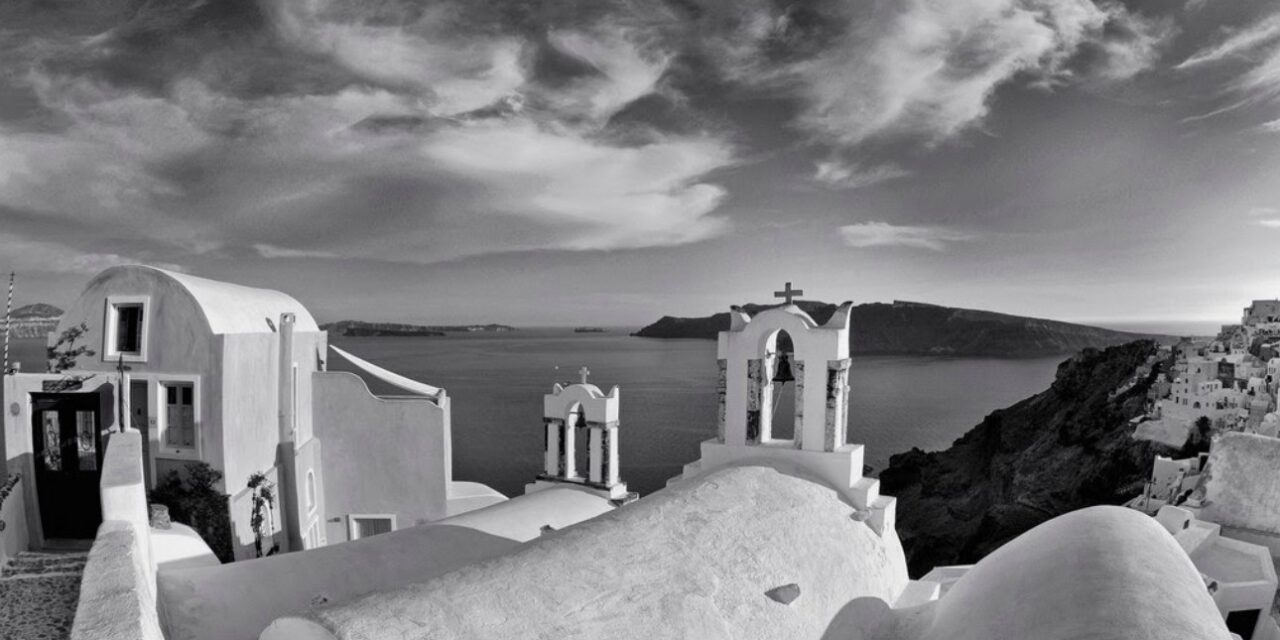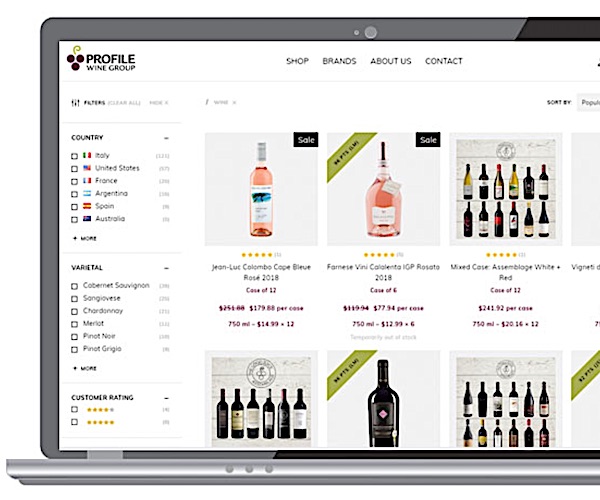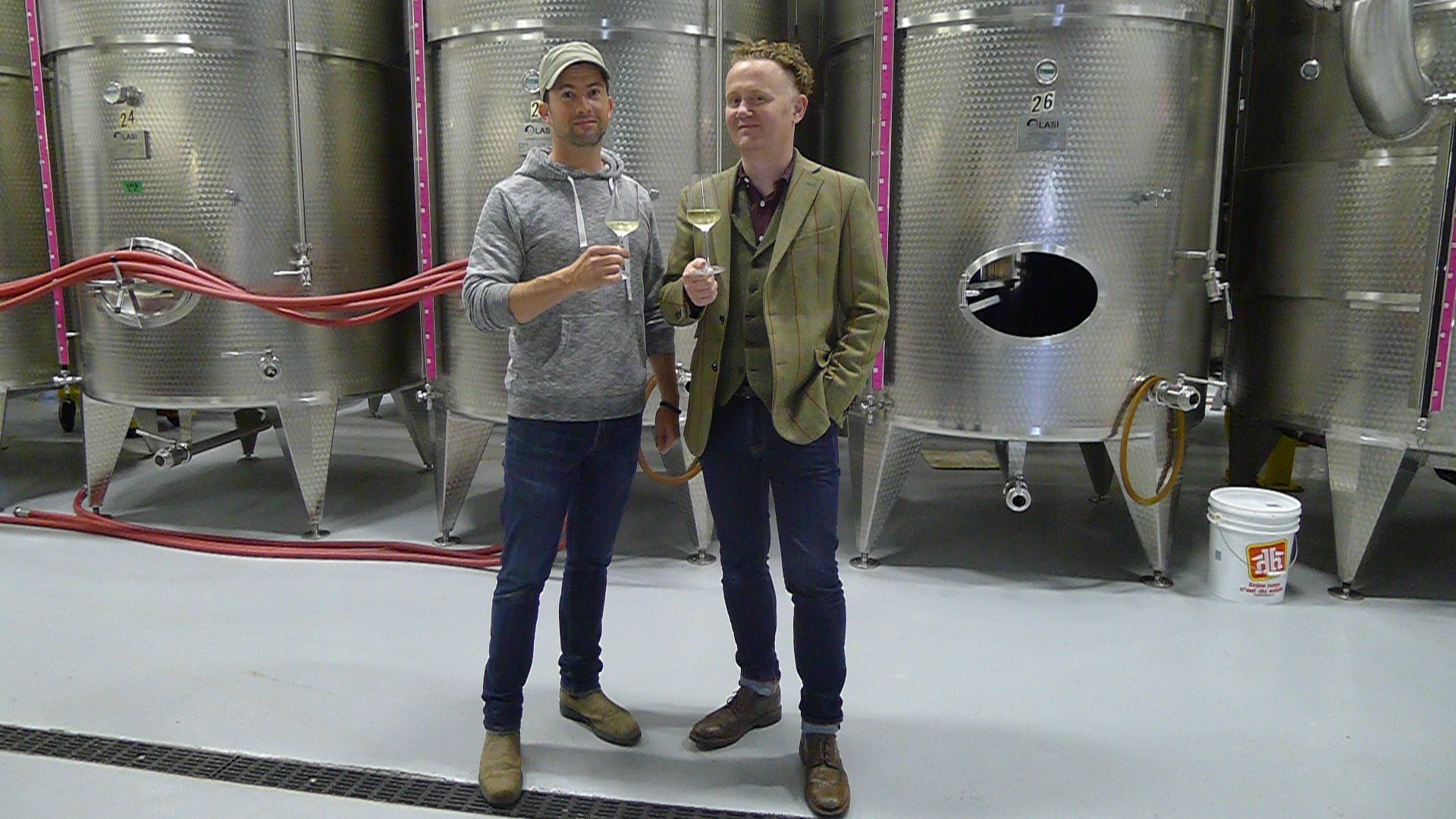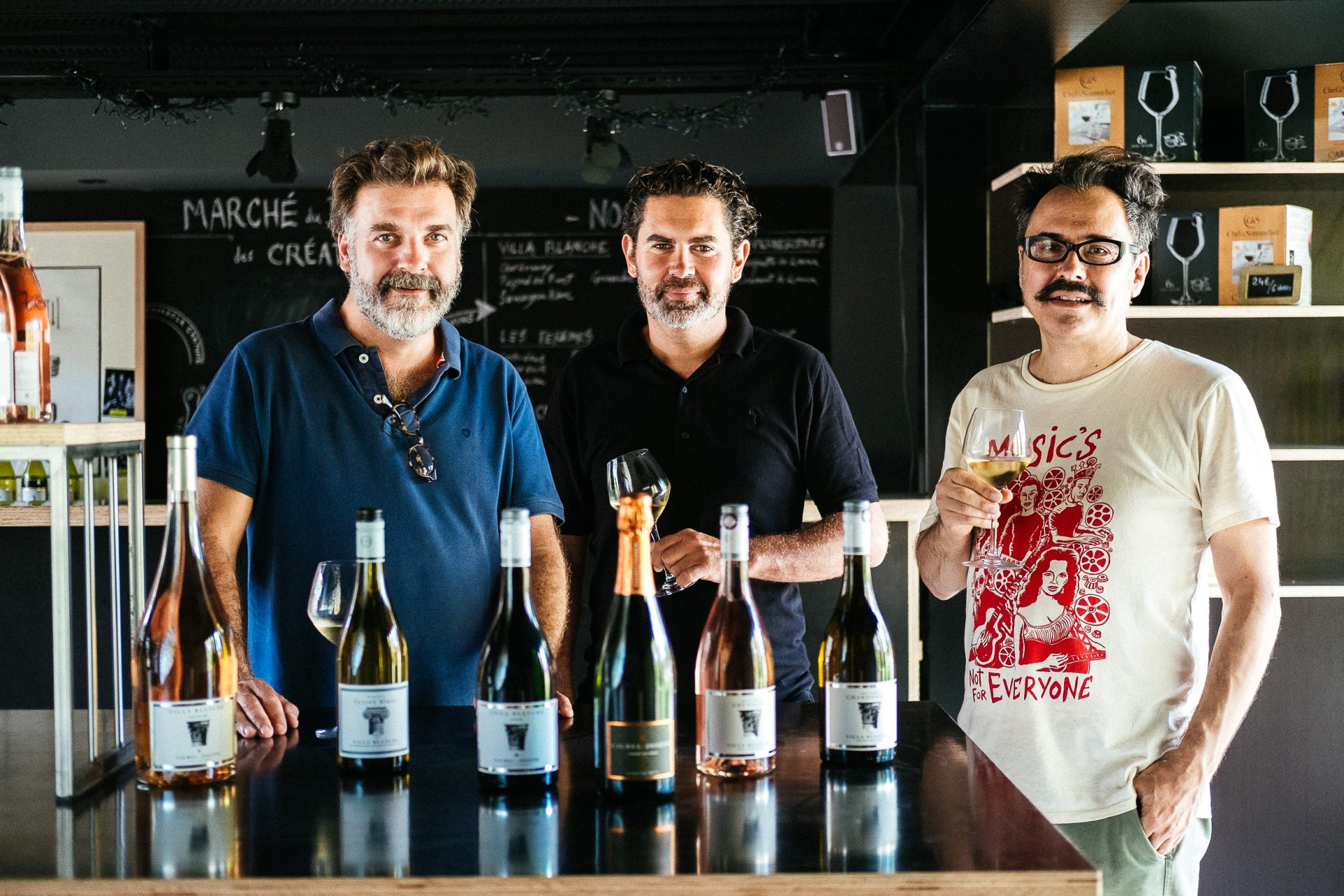I recently attended a tasting of impressive Santorini white wine. The Assyrtiko grape had fallen off my radar recently and I was glad to be reacquainted with the crisp, steely, mineral-laced style typical to this Greek volcanic island.
Given the trends among more involved wine enthusiasts, towards sustainably produced wines, indigenous varieties, “authentic” wine regions, and lighter, more vibrant wines, I would have thought that Santorini white wines would be rising in popularity.
A few years back, Assyrtiko white wines – from Santorini and across Greece – flooded my local wine shops each summer. I regularly had one chilling in my fridge. A quick search of SAQ and LCBO offerings showed me why I had forgotten Santorini’s signature grape. They are all gone.
Santorini’s Low Yields of Old Vine White Wines
Santorini is an island in the southern Aegean Sea, some 200 kilometres southeast of mainland Greece. In 1650 B.C., Santorini experienced one of the largest volcanic eruptions ever documented. The island is part of the Hellenic Volcanic Arc, one of the most significant volcanic fields in Europe – still very much active today.
Santorini’s soils are a mix of lava, volcanic ash, and pumice stone. The lack of clay and thus organic matter provides a barrier against many pests and diseases, most notably phylloxera. As such, the island’s vines are own-rooted, with a significant number of venerable old vines.
The climate is hot and very dry. Despite this, vineyards are not irrigated. Humidity from sea breezes is absorbed by the volcanic soils. The intensity of the winds that buffet the island is too much for a trellised vineyard. Vines are therefore trained in a unique spiral, whereby vine canes are “woven” into a basket shape with the grapes growing inside this protective shield.
Leading Santorini wine producer, Santo Wines, explains that “the bigger the basket, the older the plant, with some of them boasting a root system more than 200 years old”. This ground level basket training system, called Kouloura, means back-breaking labour that can only be accomplished by hand.
The combination of a hot, dry, windy climate, and kouloura vine training, equates to very low yields. Many growers indicate a mere 10 – 20 hectolitres/ hectare harvest level. Put in perspective, this is far less than yields derived from Grand Cru Bourgogne plots. Combine this with the rough estimate given to me of 1500 hectares total acreage for Santorini and you quickly realize how little wine is produced annually.
The Unique Flavour of Santorini’s Signature Grape

Photo credit: Wines of Greece (Kouloura trained Assyrtiko vine)
While most varieties of Vitis vinifera are happiest in Mediterranean climates, the particularly dry, windy conditions of Santorini would be inhospitable to many. Happily, the region found its perfect grape thousands of years ago: the white variety, Assyrtiko.
According to Wines of Greece, Santorini boasts Assyrtiko vineyards that date back 3500 years. Assyrtiko thrives in Santorini’s dry, volcanic soils. Despite the heat, Assyrtiko maintains vibrant, high acidity as the grape matures. It is not uncommon to taste Assyrtiko wines at over 14% alcohol with a level of crisp, refreshing acidity that belies their evident ripeness.
Santorini white wines are rarely overtly fruity. Assyrtiko tends toward an earthier, wet stone or oyster shell type minerality on the nose. The grape’s ripeness presents itself more on the palate, in its weighty structure, layered texture, and slight phenolic (tannic) edge.
Of course, the island also produces leaner, fruitier styles of Assyrtiko – often from younger vines or less favourable vineyard sites, but given its small production, more and more producers are focusing on premium Assyrtiko wines, of the former style.
Assyrtiko wines are often unoaked, though in line with a move toward more premium winemaking, many producers are experimenting with longer ageing, extended lees contact, and carefully managed oak ageing. Nykteri is the name given to Santorini dry white wines, left to hang longer on the vines, with a short period of skin contact in the winery, and a period of barrel ageing.
The island also makes very limited quantities of stunning Vinsanto. The grapes for these luscious, sweet wines are left to partially desiccate in the sun for a couple of weeks before a long, slow fermentation. After a few years of barrel ageing, they are an amber coloured liquid ambrosia.
So why has all the Santorini White Wine Disappeared?
The Santorini white wines that featured on wine store end aisles five years ago all sat at an “entry premium” dollar value in the high teens to low twenties. The labour involved and low yields meant that these wines were ludicrously under priced and not a sustainable way forward for the island’s producers. However, when prices were raised, sales slowed, and the listings were dropped.
A while back, I interviewed Jermaine Stone, hip hop artist turned fine wine auction director, now owner of wine importing and consultancy firm, Cru Luv Selections. We were chatting about perceived wine value from one region to another and compared with other luxury goods.
Stone gave examples of teenagers saving up for Yeezy sneakers they know they will outgrow or a middle-income worker shelling out on a Balenciaga handbag. Few regions have managed this feat of creating a luxury aura around their wines. “People have the money. They just don’t have the reverence for the product” according to Stone. “If they don’t think it’s special, they won’t want it”.
With yields as low as they are, it isn’t necessarily a bad thing that Santorini white wine sales are no longer focused on volume-driven outlets like monopoly wine stores. As the quality rises, the wines deserve a hand-selling approach built around creating that necessary reverence. But who will step forward as the region’s champion among Canada’s sommeliers and fine wine buyers? Only time will tell…
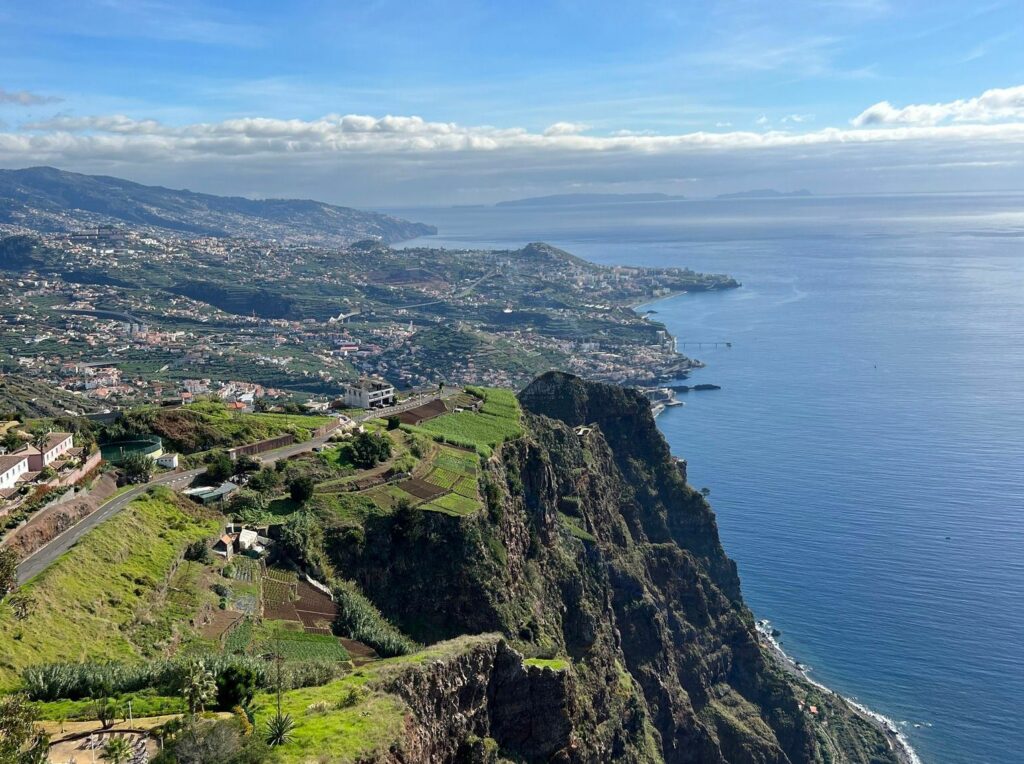
Photo credit: Santo Wines
A Handful of Interesting Santorini White Wines
2022 Domaine Sigalas Santorini
Discreet green citrus, wild herbal, and flinty aromas feature on the nose. The palate invigorates with its high, lip-smacking acidity, chalky texture, and lingering salinity. Light and dry with lots of verve, this 100% Assyrtiko is fermented stainless steel and aged for three months, with regular lees stirring.
![]()
2021 Gaia Wines “Thalassitis” Santorini
Sourced from sixty-year-old Assyrtiko vineyards. Earthy, wet stone hints mingle with fragrant yellow apple and apricot aromas. These ripe fruited notes give way to tangy citrus flavours on the palate. Racy and medium weight, with pleasant grapefruit pith bitters that lift the finish.
![]()
2022 Santo Wines Santorini Assyrtiko
Sixty- to eighty-year-old vines, grown at 400 metres altitude. Macerated six hours on skins before fermenting in stainless steel and brief ageing. Light-bodied, with nervy flavours of lime, gooseberry, and earthy minerals. Piercing acidity and a taut structure give this very dry wine a tingly, electric sensation on the palate.
![]()
2020 Estate Argyros Cuvee Monsignori Santorini
Venerable old vines (estimated at 200 years in age), fermented with wild years and aged for ten months on fine lees in stainless steel tanks. Subtle, yet highly attractive white floral, flinty, smoky nuances on the nose. Initially silky on the palate, building up to a powerful structural crescendo. Savoury and saline, with a long finish of refreshing, grapefruit pith bitters.
![]()
2022 Gaia Santorini Wild Ferment
Seventy- to eighty-year-old vines. Native yeast fermentation in stainless steel, oak, and acacia barrels, followed by twelve months’ ageing. Reminiscent of a Graves white Bordeaux nose. The palate is full-bodied, with bracing acidity and a creamy mid-palate. Juicy flavours of apricots and nectarines balance the hints of toasty, spiced oak nicely. Very powerful. Hold for one to two years or decant.
![]()
2021 Santo Wines Nykteri
85% Assyrtiko, blended with secondary white grapes Athiri and Aidani. Fifty-year-old vines. Blend is aged six months in French oak foudres. Pretty aromas of white flowers, beeswax, wet stone, and preserved lemon play across the nose. Very youthful on the palate with its firm acidity, structure, and tannins. Hints of juicy apple flavours emerge with aeration. Needs time to soften.
![]()
2021 Sigalis Santorini Barrel
Aged in French oak barrels (10% new) for eight months, this 100% Assyrtiko wine is sourced from selected blocks of sixty year+ aged plots across the island. Complex notes of ripe stone fruit mingle with wild herbs, spring blossoms, and exotic spice on the nose. The palate is rounded and fleshy, lifted by brisk acidity that accentuates lingering salty hints on the finish.
![]()

